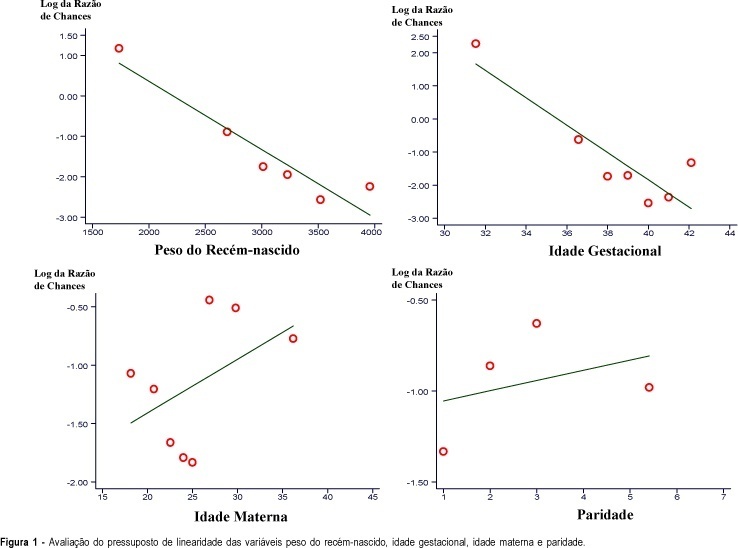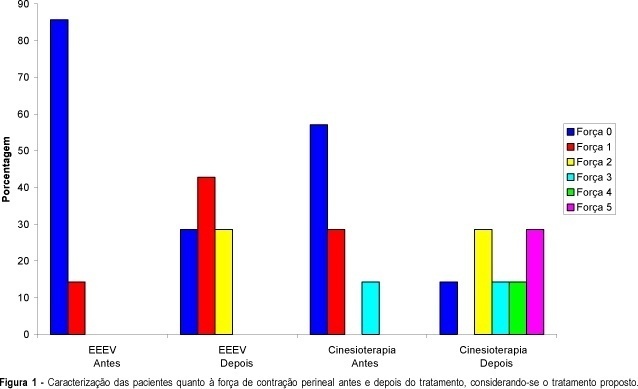Summary
Revista Brasileira de Ginecologia e Obstetrícia. 2000;22(3):175-179
DOI 10.1590/S0100-72032000000300009
Purpose: to evaluate the route of delivery in a group of low-income primipara pregnant women with a previous cesarean section, and the factors associated with the repetition of the cesarean section on the second delivery. Patients and Methods: it was a case-control study including 356 women who were assisted at the Maternity of CAISM/UNICAMP during the period between January 1993 and January 1996. The cases were 153 women whose second delivery was through a cesarean section and the controls were 203 women whose second delivery was vaginal. For analysis, means, standard deviation, Student's t-test, Mann-Whitney test, chi² test and odds ratio (OR) with 95% CI for each factor possibly associated with cesarean section on the second delivery were used. Results: the route of the second delivery was vaginal for 57% of the women. Among the several variables studied, those which showed to be significantly associated with a cesarean section on the second delivery were: higher maternal age (for women over 35 years, OR = 16.4), previous abortions (OR = 2.09), induced labor (OR = 3,83), premature rupture of membranes (OR = 2.83), not having an epidural analgesia performed during labor (OR = 5.3), the finding of some alteration in fetal well-being (OR = 2.7) and the delivery occurring during the afternoon (OR = 1.92). Conclusions: these results indicate that the factors associated with the repetition of cesarean section in women with a previous scar of cesarean section in this population are predominantly medical; however, there is still the possibility of proposing interventions directed to decreasing the rates of repeated cesarean sections.
Summary
Revista Brasileira de Ginecologia e Obstetrícia. 2000;22(1):19-26
DOI 10.1590/S0100-72032000000100004
Purpose: to evaluate gestational and delivery complications as risk factors for perinatal death. Methodology - Patients: the cases (perinatal deaths) were identified among a total of 3,031 deliveries from the maternity of the Rio de Janeiro State Military Police. Methods: the study design was a nested case-control one. Cases (n = 82) were perinatal deaths with a minimum gestational age of 28 weeks or a weight of 1,000 g. Controls (n = 246) were live babies for the first week of life. The analysis was made in three steps: univariate, stratified and multivariate (logistic regression). Results: the gestational complications showed an odds ratio of 4.21 and the delivery complications, 5.26. The newborn weight showed an OR = 0.999 per gram over 1,000 g weight. The gestational age showed an OR = 0.729 per week of gestation over 28 weeks. Conclusions: the gestational complications and the delivery complications were important risk factors for perinatal death. The gestational age and the weight of the newborn were important protective factors.

Summary
Revista Brasileira de Ginecologia e Obstetrícia. 2000;22(1):27-32
DOI 10.1590/S0100-72032000000100005
Purpose: to identify and quantify the underreporting of maternal mortality, from death certificates (DC) in Campinas, São Paulo, from 1992 to 1994. Methods: a total of 216 DC whose causes of death were maternal (declared and/or presumed) were selected among the 1032 DC of 10 to 49-year-old women. A complementary investigation was performed on hospital records, at the death verifying units, and in households. Results: eight additional maternal deaths were identified among the 204 DC with presumed maternal death. This corresponded to an underreporting rate of 40% or to a correction factor of 1.67 for the official MMR. The first cause of underreporting was abortion (71.5% or 05/07) and indirect maternal deaths represented the second cause (66.6% or 02/03). Conclusions: the death certificate cannot be considered the only source to identify maternal death. Complementary investigation of the presumable causes of maternal death should be performed. Legislation, social and religious factors might influence the underreporting of abortion as the cause of maternal death.
Summary
Revista Brasileira de Ginecologia e Obstetrícia. 2000;22(1):43-48
DOI 10.1590/S0100-72032000000100008
Purpose: to analyze the prevalence of genuine urinary incontinence (GUI) recurrence, after at least two years of follow-up, in different surgical techniques used for its correction. Patients and Methods: fifty-five patients with diagnosis of GUI, submitted to surgery for its repair at the Serviço de Ginecologia e Obstetrícia do Hospital de Clínicas de Porto Alegre from 1992 to 1996 and whose post-surgical follow-up was superior to 2 years were divided into three groups according to the surgical approach: Kelly-Kennedy (n = 24), Burch (n = 23) and Marshall-Marchetti-Krantz (n = 8). Results: there were no differences regarding recurrence rate, age at surgery and at recurrence time, estrogen therapy, number of pregnancies and vaginal delivery (p>0.05). Although posterior perineoplasty was more prevalent in the Kelly-Kennedy group, it did not influence the recurrence rate. The group submitted to the Burch approach had more years of menopause at the time of surgery. Conclusion: the recurrence rates of urinary incontinence comparing the three different techniques (Kelly-Kennedy, Burch and Marshall-Marchetti-Krantz) were, respectively, 29.2, 39.1 and 50%, which did not differ statistically. Considering the potential confusional bias for urinary stress incontinence, they did not differ among the groups. Nevertheless, we noticed that all women who had previous surgery presented recurrence of incontinence.
Summary
Revista Brasileira de Ginecologia e Obstetrícia. 2000;22(1):49-54
DOI 10.1590/S0100-72032000000100009
Purpose: to compare patients with genuine stress incontinence (GSI) who were submitted to a pelvic floor exercise program (PFEP) with those who were submitted to a pelvic floor electrical stimulation (PFES). Methods: fourteen GSI patients, with age between 31-64 years, participated in the study. They were divided into two groups of 7 each. PFEP or PFES was performed for 10 days. The women were evaluated at the first consultation and reevaluated after the ten-day treatment by only one physical therapist. For the statistical analysis nonparametric tests were used. Results: all had a partial or a total improvement of the GSI after the treatment, considering the subjective and objective analysis of the research. Conclusion: both PFEP and PFES showed to be effective to treat GSI, although PFEP showed a tendency to be the better treatment.

Summary
Revista Brasileira de Ginecologia e Obstetrícia. 2000;22(4):191-199
DOI 10.1590/S0100-72032000000400002
Purpose: to determine the frequency of prenatal diagnosis in newborns with gastroschisis operated at the Instituto Materno-Infantil de Pernambuco (IMIP) and to analyze its repercussions on neonatal prognosis. Patients and Methods: a cross-sectional study was carried out, including 31 cases of gastroschisis submitted to surgical correction in our service from 1995 to 1999. Prevalence risk (PR) of neonatal death and its 95% confidence interval were calculated for the presence of prenatal diagnosis and other perinatal and surgical variables. Multiple logistic regression analysis was carried out to determine the adjusted risk of neonatal death. Results: only 10 of 31 cases of gastroschisis (32.3%) had prenatal diagnosis and all were delivered at IMIP. No newborn with prenatal diagnosis was preterm but 43% of those without prenatal diagnosis were premature (p < 0,05). Birth-to-surgery interval was significantly greater in the absence of prenatal diagnosis (7.7 versus 3.8 hours). The type of surgery, need of mechanical ventilation and frequency of postoperative infection were not different between the groups. Neonatal death was more frequent in the group without prenatal diagnosis (67%) than in the group with prenatal diagnosis (20%). The main factors associated with increased risk of neonatal death were gestational age <37 weeks, absence of prenatal diagnosis, delivery in other hospitals, birth-to-surgery interval > 4 hours, staged silo surgery, need of mechanical ventilation and postoperative infection. Conclusions: prenatal diagnosis was infrequent among infants with gastroschisis and neonatal death was extremely high in its absence. It is necessary to achieve greater rates of prenatal diagnosis and to improve perinatal care in order to reduce this increased mortality.
Summary
Revista Brasileira de Ginecologia e Obstetrícia. 2000;22(4):201-208
DOI 10.1590/S0100-72032000000400003
Purpose: to evaluate the modifications due to premature rupture of the membranes of variables of the fetal biophysical profile, comparing them to the ones found in pregnant women with intact membranes. In the group with premature rupture of the membranes, the association of biophysical variables with the Apgar score at the first and fifth minutes and with the occurrence or not of clinical chorioamnionitis and neonatal infection was analyzed. Patients and Methods: in a prospective study, 112 fetal biophysical profiles were established in 60 pregnant women with premature rupture of the membranes at a period between the 28th and the 40th week of pregnancy, and only the last fetal biophysical profile was analyzed and compared to other 60 fetal biophysical profiles of pregnant women with gestational ages identical to the group of study and with intact membranes. Results: statistical analysis of the results revealed that the premature rupture of the membranes diminished the reactivity, not interfering with the body movements of the fetus. It also diminished the frequency of the respiratory movements of the fetus, not determining modifications of the fetal tonus, and considerably decreasing the amniotic fluid index. In terms of prediction of chorioamnionitis and neonatal infection, the fetal biophysical profile did not show any significant statistic validity; however, when the biophysical variables were present, the correlation with the absence of chorioamnionitis and neonatal infection was clearly shown. The result of the last fetal biophysical profile was strongly associated with the Apgar score at the 5th minute. Conclusion: the fetal biophysical profile should be used routinely in pregnant women with premature rupture of the membranes with the purpose of evaluating fetal vitality, and in order to detect those fetuses at a higher risk of infection, specially those with gestational ages of less than 34 weeks. Regarding those fetuses it is best to use a conservative approach.
Summary
Revista Brasileira de Ginecologia e Obstetrícia. 2000;22(4):217-223
DOI 10.1590/S0100-72032000000400005
Purpose: to identify recurrent spontaneous abortion- associated factors. Subjects: one hundred seventy-five outpatients were investigated from March 1993 to March 1997 at the "Ambulatório de Aborto Recorrente CAISM/UNICAMP". All of them had had three or more consecutive spontaneous abortions and/or two abortions and were 35 years or more old. Methods: the investigation protocol included: couple's karyotype; hysterosalpingography, serial plasma progesterone levels and/or endometrial biopsy; toxoplasmosis, listeriosis, brucelosis, lues and cytomegalovirus serum tests; Chlamydia trachomatis and Mycoplasma hominis cultures of cervical discharge; TSH and thyroid hormone levels; fasting glucose; autoantibody panel, anti-HLA antibody search by microlymphocytotoxicity crossmatch and one-way mixed lymphocyte culture with inhibitor factor detection. Husband's evaluation included: physical evaluation, lues, Chagas' disease, B and C hepatitis and AIDS serum tests, microlymphocytotoxicity crossmatch and one-way mixed lymphocyte culture with inhibitor factor detection. Results: alloimmune etiology was the most frequently found factor (86.3% of studied patients), represented by negative crossmatch and one-way mixed lymphocyte culture with inhibitor factor below 50%. The second most frequently found factor was cervical incompetence (22.8%), followed by hormonal factor (21.2%), mainly represented by luteal insufficiency. Some patients were found to have more than one etiologic factor. Conclusion: the investigation of recurrent spontaneous abortion-associated factors must include alloimmune etiology. Most cases will remain unexplained without this investigation.